This Palestinian salad, often simply called “salata” in Arabic, is a super simple, yet vibrant and flavorful salad. Bursting with freshness, this chopped Mediterranean salad features just a few basic ingredients- cucumbers, tomatoes, green onions, and fresh herbs - all tied together with a lemony olive oil dressing. In less than 15 minutes, you’ll have a refreshing, vibrant side dish that compliments nearly any meal.
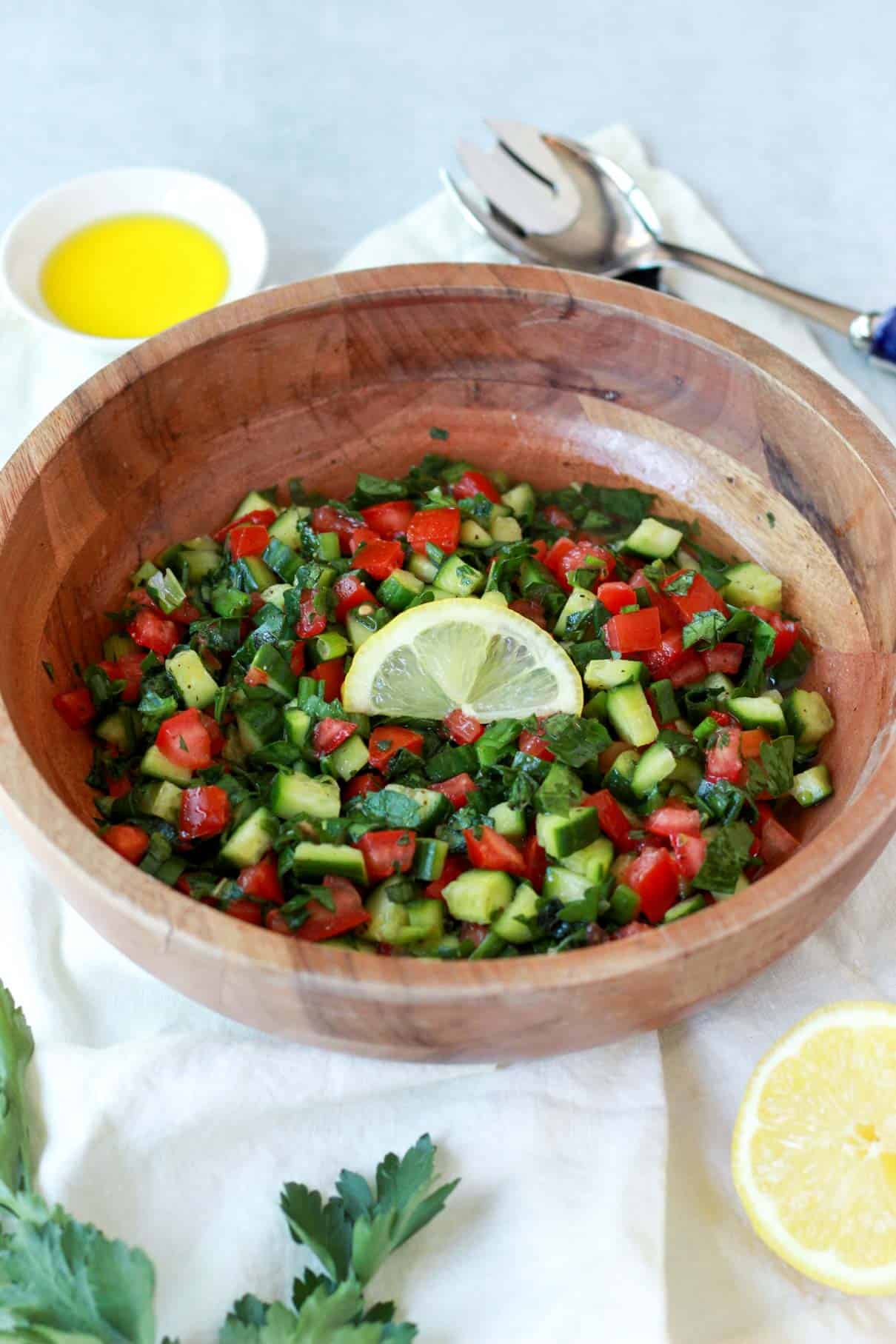
Whether you’re looking for a quick side dish, a light appetizer, or a healthy meal addition, this Palestinian salad is perfect for any occasion.
Jump to:
Origins of Palestinian salad
Also called “Jerusalem salad” or “salata falahiyeh” (farmer's salad in Arabic) this salata recipe is deeply rooted in Palestinian heritage. The origins of this salad trace back a couple centuries ago, when tomatoes were introduced to the region’s cuisine. Palestinian farmers incorporated the new ingredient into their traditional cuisine and made this salad. Unlike many Western salads that include lettuce, this salad focuses on cucumbers, tomatoes, and herbs. The use of these fresh, local ingredients reflects the deep agricultural roots of Palestinian culture and the connection to the land. (1)
Over time, this simple yet flavorful dish has become a symbol of Palestinian identity. Though some outside the region have called it “Israeli salad,” even Israeli historians and chefs recognize its true Palestinian roots. (2) Renaming it as “Israeli” erases part of Palestinian culture, which is closely tied to its culinary traditions. Despite this, the salad remains a cherished part of Palestinian cuisine.
Chopped Mediterranean salad ingredients
The ingredients in this salad are so simple, yet each one helps capture the authentic flavors of Palestinian salata.
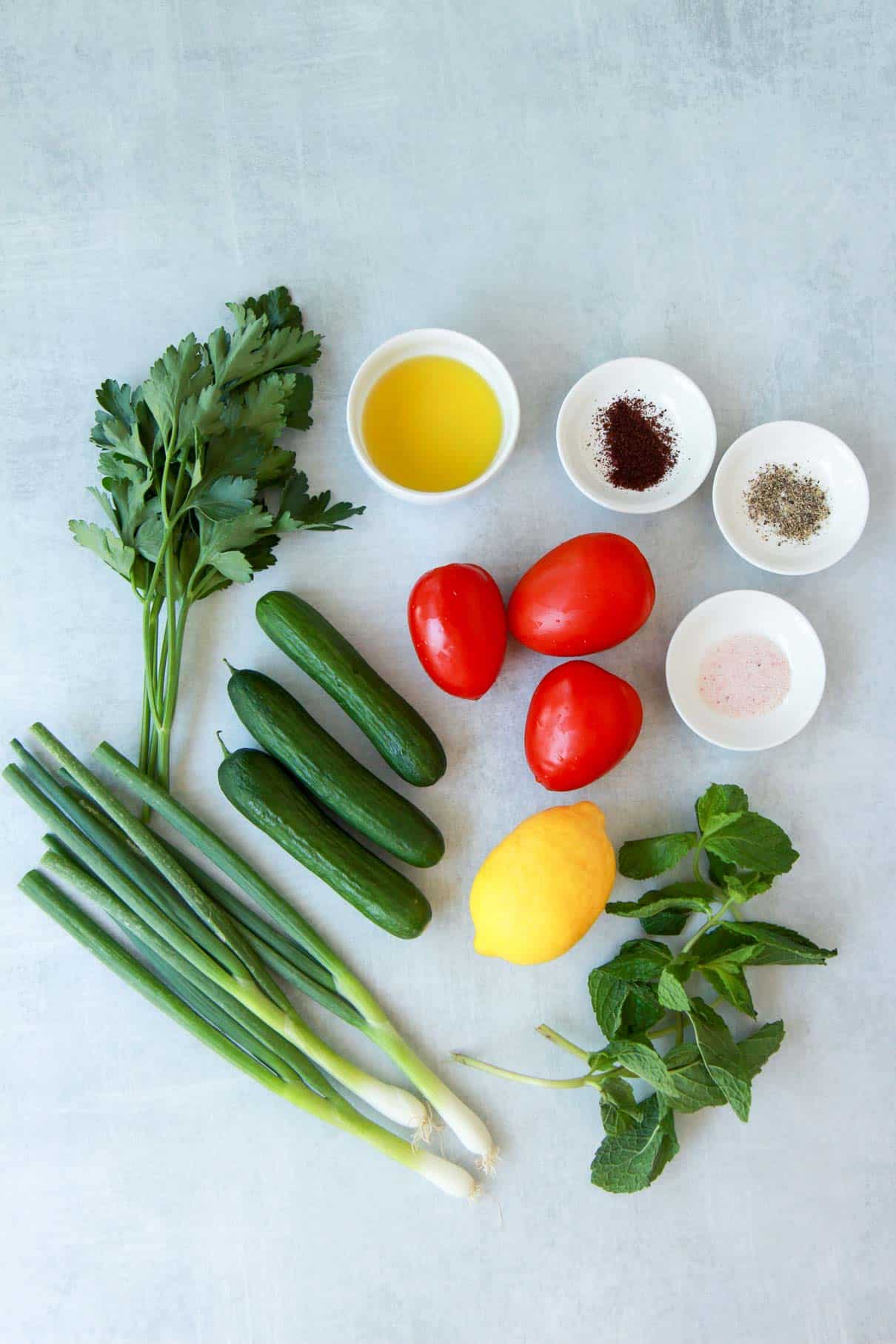
Cucumbers
Cucumbers bring a crisp, refreshing texture to this salad. Unlike salads that rely on lettuce for bulk, this chopped Mediterranean salad uses cucumbers as the primary base, along with fresh herbs, to keep the dish light and crunchy. I love using Persian cucumbers for this dish because of their small size and thin skin, which doesn't need peeling. Their subtle sweetness and firm texture make them ideal for this salad.
Tomato
Tomatoes, another staple of this salad, add a juicy, tangy flavor that pairs beautifully with the cucumbers. I recommend removing the seeds to prevent the salad from becoming too watery.
Green onions
Green onions bring a mild, delicate flavor to this salad. I prefer using green onions for their subtle bite, but you can easily substitute with red or white onions for a more pronounced flavor.
Parsley and mint
These fresh herbs are what truly set this salad apart. Parsley adds an earthy flavor, while mint adds a refreshing taste that complements the other ingredients perfectly. I recommend finely chopping the herbs so they blend easily into the salad.
Lemon juice and olive oil
The dressing for this salad is as simple as it gets: lemon juice and olive oil. It’s important to use high-quality extra virgin olive oil, as it affects the flavor of the dressing.
Sumac
While sumac is optional, I highly recommend it for an extra burst of flavor. This tangy spice is made from dried sumac berries and is commonly used in Middle Eastern cooking. It adds a citrusy note to the salad.
Check the recipe card for the exact quantities.
Step-by-step instructions
This Middle Eastern cucumber tomato salad couldn’t be easier to prepare. The steps are straightforward, and all you need is a knife, cutting board, and mixing bowl.
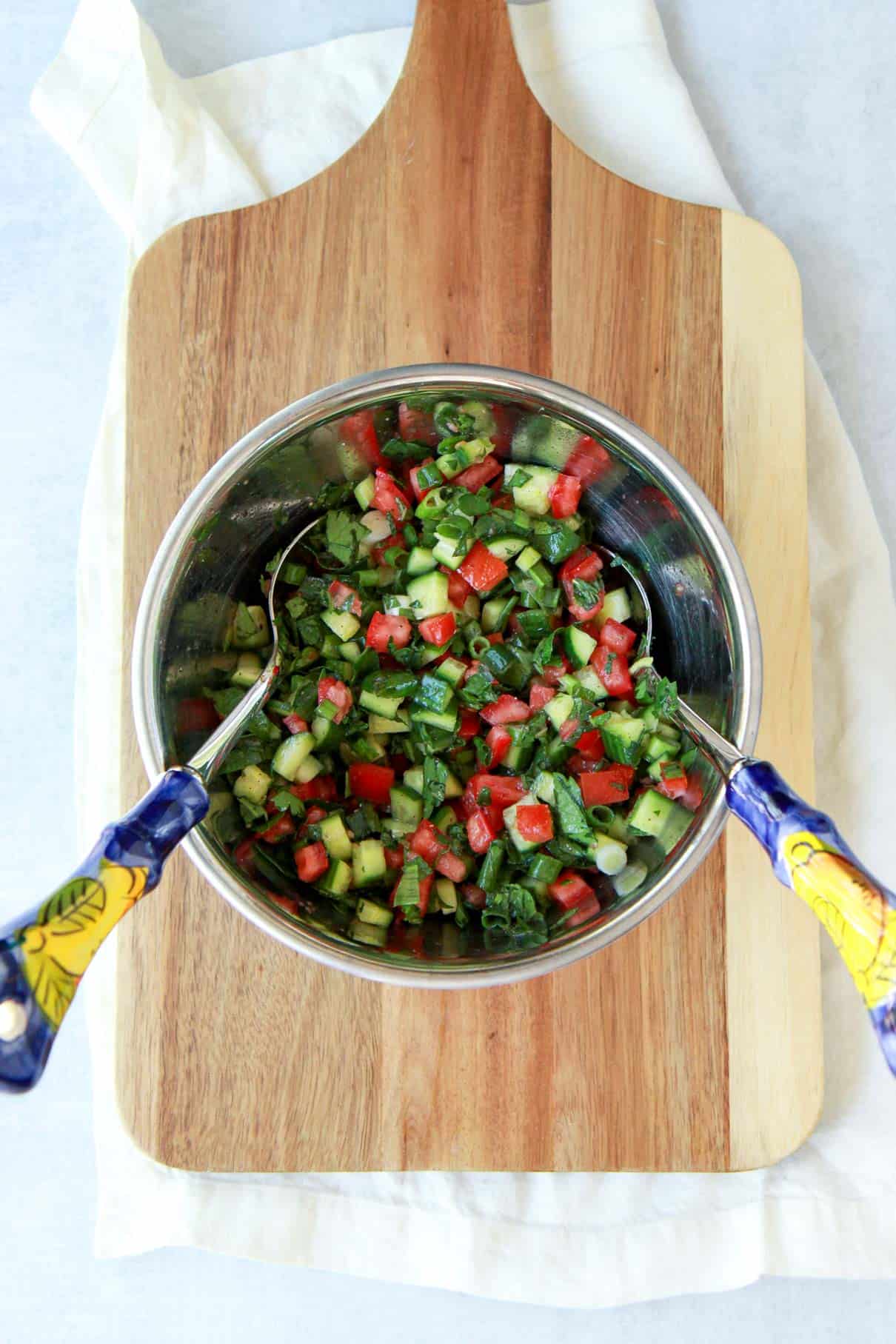
Chop the vegetables
Start by dicing the cucumbers and tomatoes into similar-sized pieces. This ensures that every bite has a balanced mix of flavors and textures.
Finely chop the herbs
Next, finely chop the parsley and mint. These herbs will blend into the salad, adding freshness.
Dress and mix the salad
In a large bowl, combine the cucumbers, tomatoes, and green onions. Drizzle with olive oil and lemon juice. Season with salt, pepper, and sumac if you’re using it. Mix everything thoroughly so that the dressing coats all of the ingredients evenly.
Hint: It’s important to chop the herbs finely so that no one gets any large leafy bits.
Substitutions and variations
Something I really love about this salad is that it can easily be customized to your preferences!
- Onion: If you don’t have green onions on hand, you can use red or white onions instead. Red onions will add a slightly sweet flavor, while white onions will have a more neutral taste.
- Add a diced lemon: For a zesty addition, try adding diced lemon to the salad. This will intensify the citrusy flavors. To prepare the lemon, simply dice it with the peel on.
- Add bell pepper: If you’re looking for extra crunch, diced red or green bell pepper is a great addition. Bell pepper also adds another layer of flavor.
- Add avocado: Add some diced avocado for a creamy texture that contrasts with the crunch of the cucumbers and tomatoes.
- Add protein: To make this salad more substantial, consider adding chickpeas or crumbled tofu for extra protein. Both options blend into the salad and make it a more filling dish.
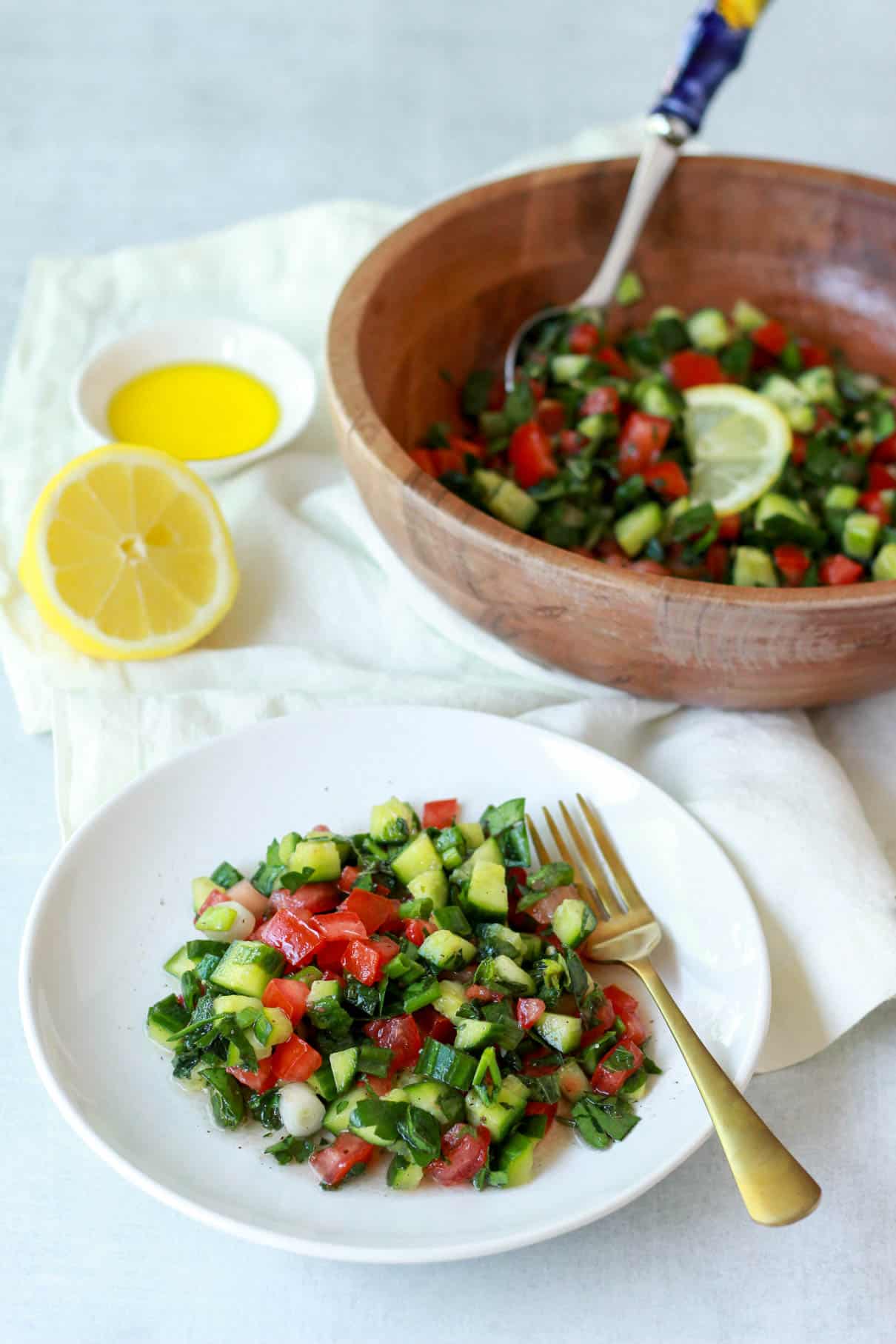
Top tips for making this salata recipe
- Use ripe tomatoes. The quality of the tomatoes makes a huge difference in this salad. Look for tomatoes that are firm but juicy, with a deep red color. I prefer Roma tomatoes, but heirloom and vine tomatoes work as well.
- Don’t skimp on the herbs. Fresh parsley and mint are what make this chopped Mediterranean salad stand out. Be sure to use a generous amount of both for the best flavor. It’s pretty hard to overdo it!
- Serve immediately for maximum freshness. This salad is best enjoyed fresh. If you need to make it ahead of time, store the dressing separately and mix just before serving.
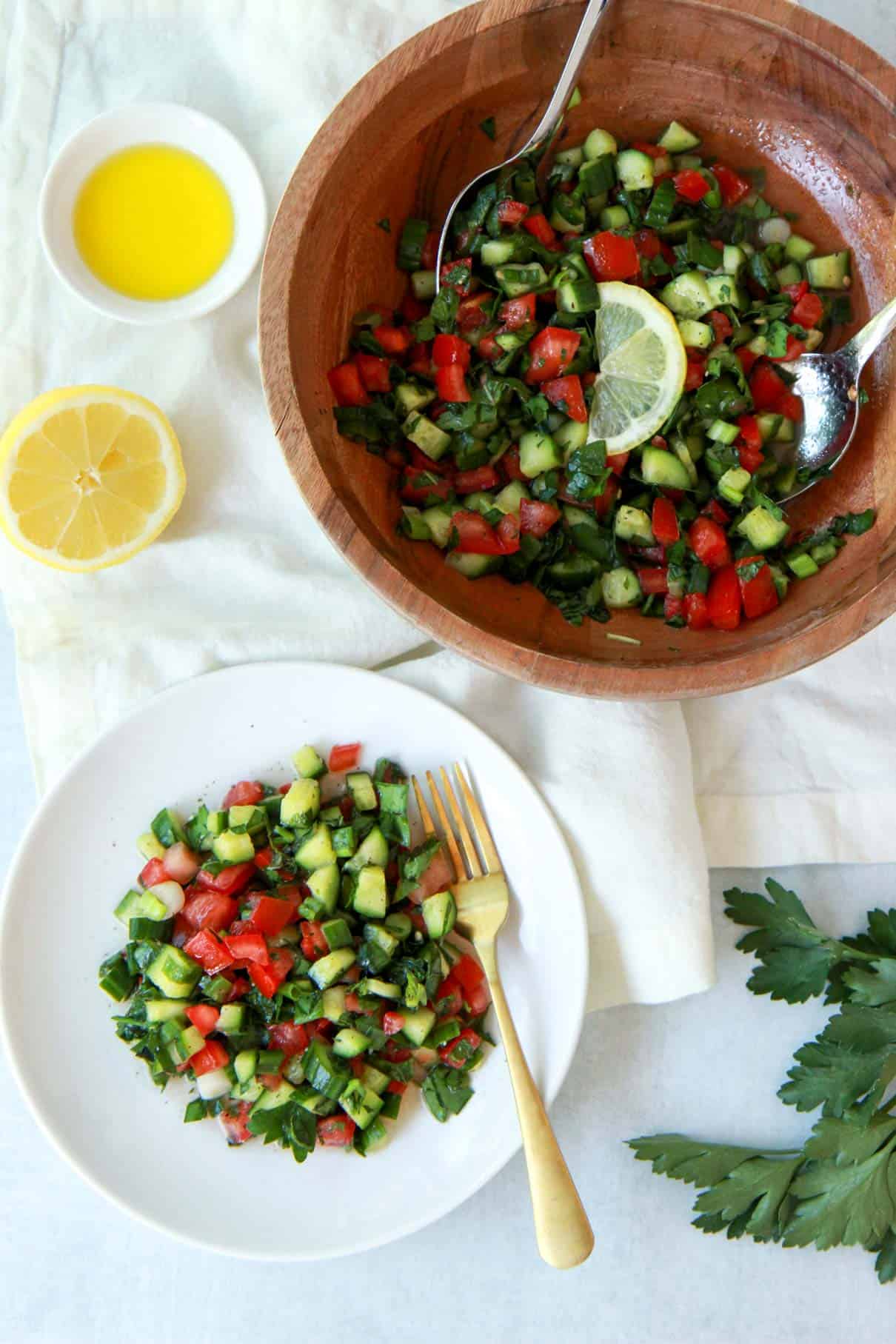
FAQs
Jerusalem salad is made with simple, fresh ingredients like diced cucumbers, tomatoes, onions (often green onions), parsley, and mint. It's dressed with olive oil, lemon juice, and a pinch of salt.
Yes, cucumber and tomato salad is healthy! It's low in calories and packed with vitamins and antioxidants. Cucumbers provide hydration and fiber, while tomatoes are rich in vitamins A and C, as well as lycopene, which is known for its antioxidant properties.
Yes, but I recommend storing the dressing separately and mixing the salad just before serving to keep the vegetables fresh and crunchy.
This salad will keep in the refrigerator for up to 2 days. However, it’s best enjoyed fresh, as the vegetables will lose their crunch over time.
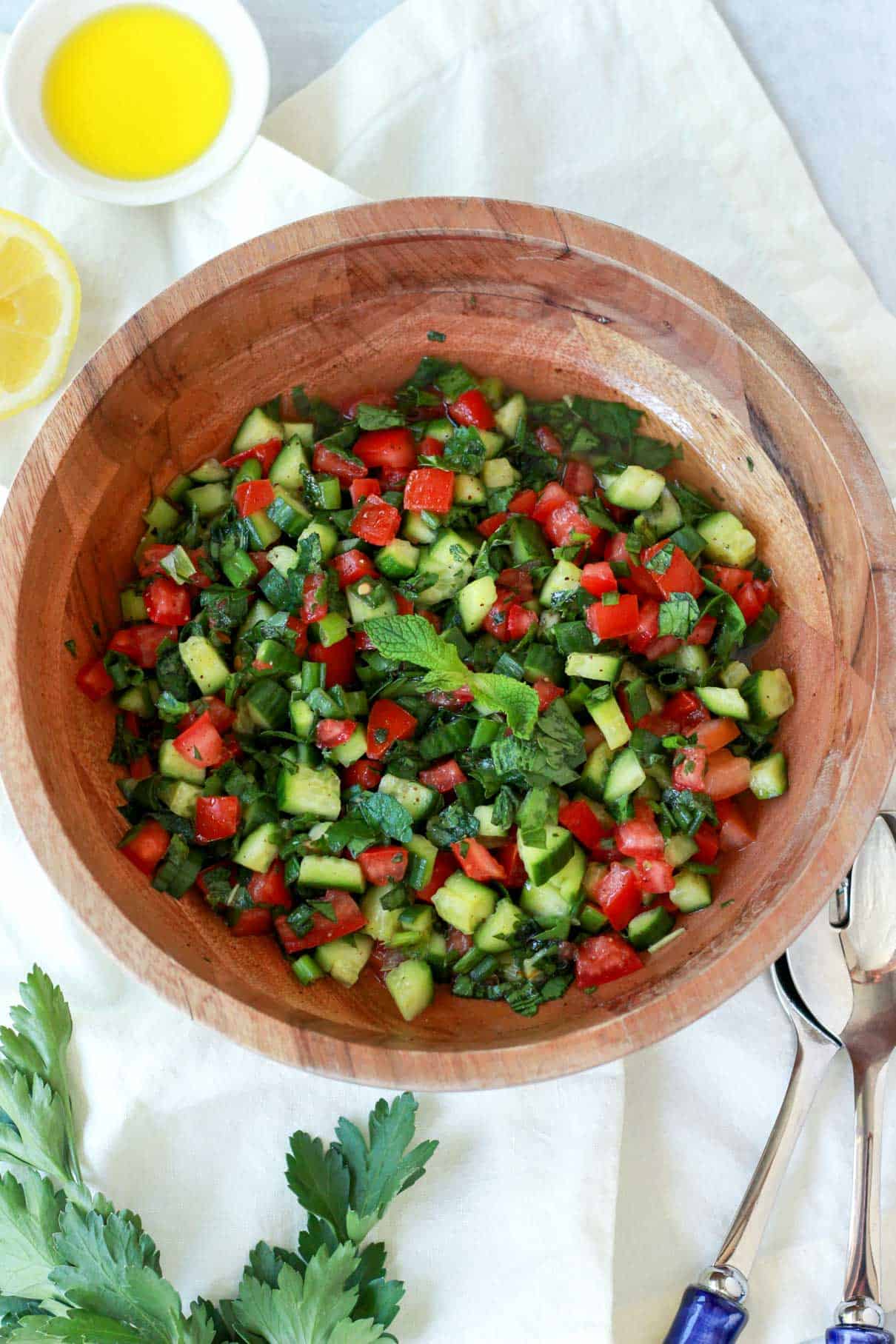
What to serve with this salad
This salad pairs wonderfully with a variety of dishes, making it a versatile side for any meal. Here are some of my favorite dishes to serve alongside it:
- Mujadara: This one-pot mujadara dish, seasoned with caramelized onions, complements the freshness of the salad beautifully.
- Za’atar-Crusted Tofu Steak with Green Tahini: The earthy flavors of za’atar crusted tofu pair wonderfully with the lightness of this salata.
- Arabic Kousa and Bulgur Pilaf: This zucchini and bulgur pilaf is a traditional Middle Eastern dish that pairs perfectly with the fresh cucumber and tomato salad.
Recipe
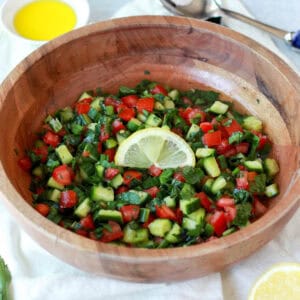
Palestinian Salad
Ingredients
- 4 Persian cucumbers
- 4 tomatoes Roma preferred*
- 4 green onions/scallions**
- ½ cup each parsley leaves and mint leaves finely chopped
- 3 tablespoon olive oil extra virgin
- Juice of 1 lemon about ¼ cup
- ¾ teaspoon salt
- ½ teaspoon sumac optional
Instructions
- Dice cucumbers, tomatoes, and green onion to the same size. It’s preferred to also remove the inside seeds of the tomato.
- Make sure your herbs are finely chopped, and add them to the salad.
- Toss the salad with lemon juice, salt, olive oil, and sumac if using. Mix thoroughly and enjoy!
Notes
Nutrition
Related recipes
Looking for other recipes like this salata? Try these:

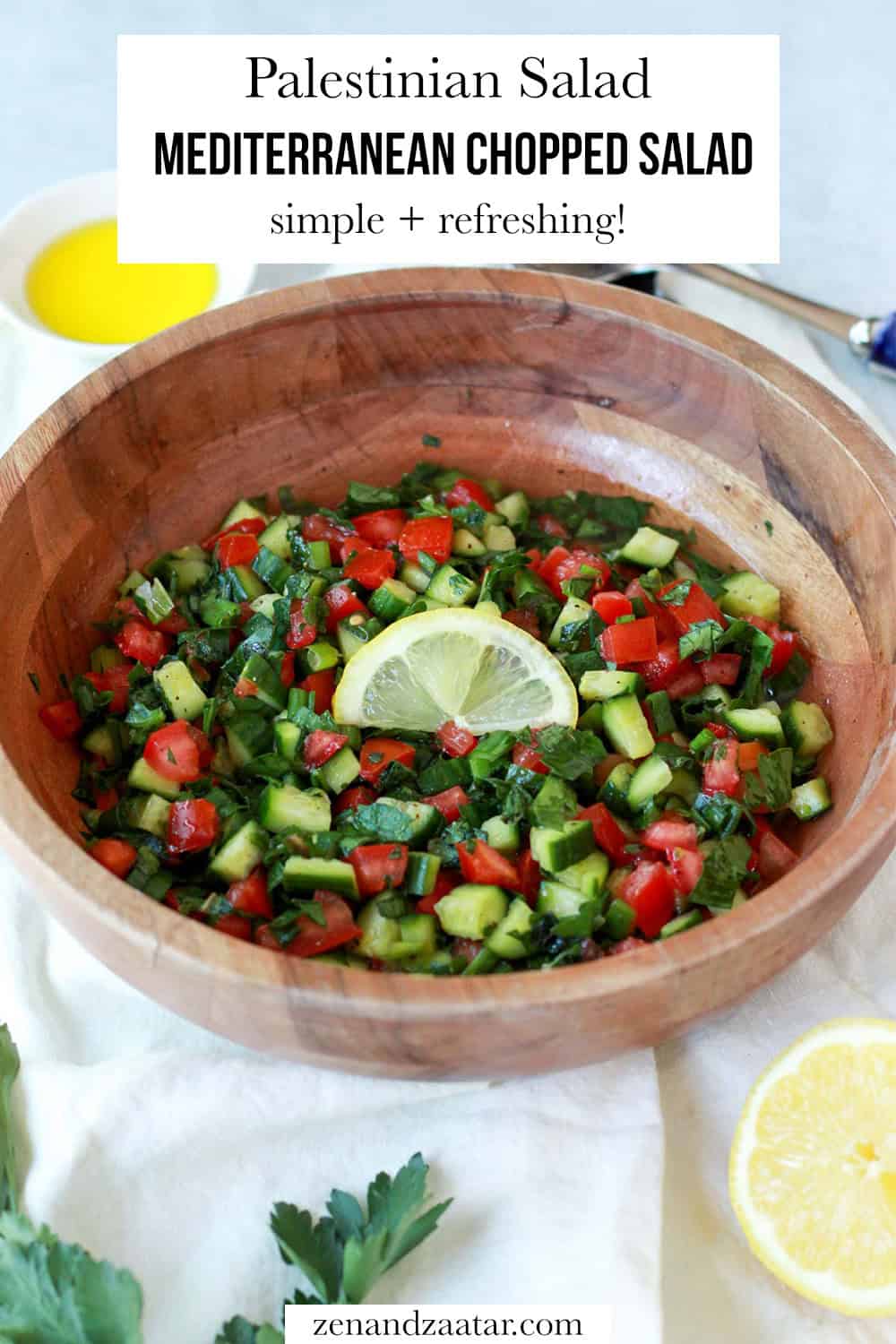
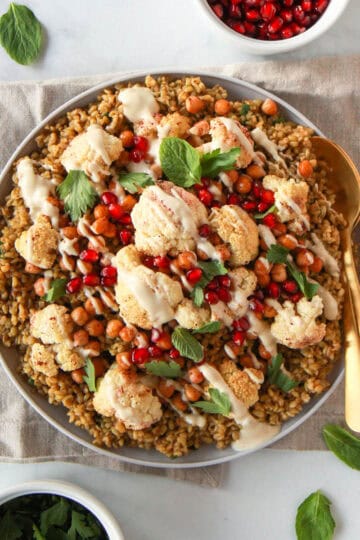
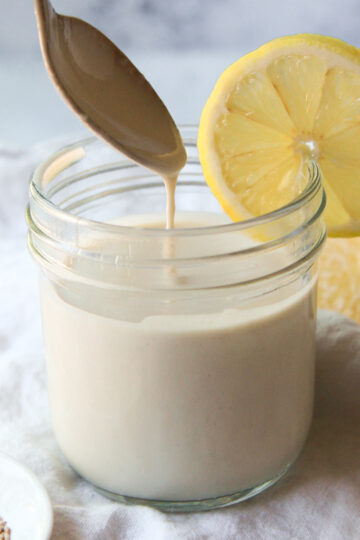
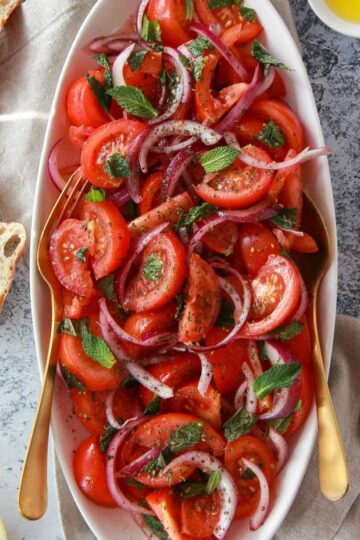
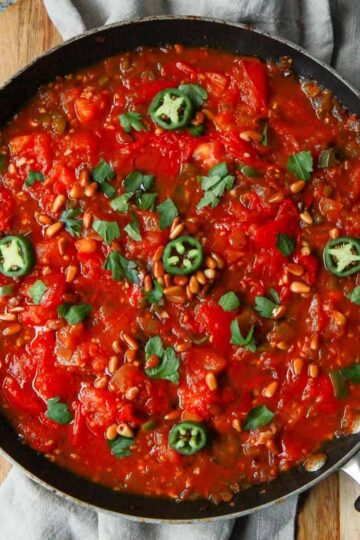
Leave a Reply